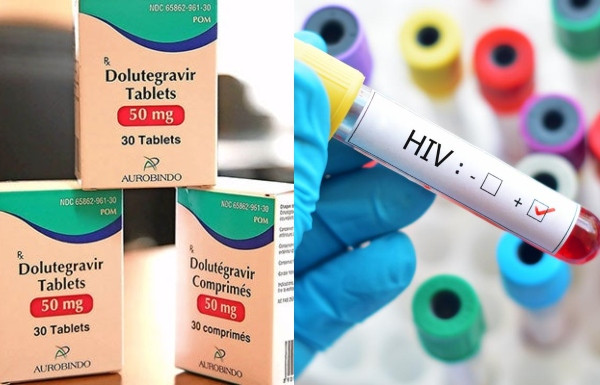WHO Issues Guideline On Use Of New HIV Treatment Drug For Pregnant Women

The World Health Organization, WHO has issued an updated recommendation on the use of new antiretroviral therapy by expectant women, stating that the risk of neural tube defects was minimal using Dolutegravir, (DTG) .
The safety of dolutegravir (DTG), during pregnancy has been one of the most urgent questions in global health for the past year, with new studies and updated WHO guidelines presented at the 10th IAS Conference on HIV Science.
At the 22nd International AIDS Conference (AIDS 2018) last year, data from the Tsepamo study in Botswana suggested that the use of DTG in early pregnancy may be linked to neural tube defects (NTDs), serious birth defects of the brain and spine.
As a result, some countries have paused their plans to make DTG-based regimens their preferred first-line therapy and the World Health Organisation (WHO) issued a note of caution about the use of DTG by women of childbearing age as part of its interim guidelines recommending DTG as the preferred first- and second-line antiretroviral therapy for people living with HIV.
At the 10th IAS Conference on HIV Science (IAS 2019), additional research from Botswana has found that the risk of NTDs is less than was signalled last year. To help clinicians and health ministries act on these findings, WHO issued updated recommendations on antiretroviral therapy and DTG use.
READ ALSO: Breakthrough As WHO Certifies New HIV Treatment Drug For Pregnant Women
To inform these recommendations, a number of community and scientific forums were held to discuss the issue directly with women of reproductive age who have the least access to obtaining DTG. Jacque Wambui, African Community Advisory Board (AFROCAB) member, Kenya, said:
“Community engagement, including input from women living with HIV, has played a key role in updating these recommendations and will be critical to rolling them out.”
Anton Pozniak, International AIDS Society president and IAS 2019 international scientific chair, added:
“Ultimately, what is most important is offering women the choice to make informed decisions.”
WHO updated these recommendations based on new evidence.
Botswana’s Tsepamo study analysed more than 119,000 deliveries from August 2014 to April 2019, including nearly 1,700 among women who were taking DTG-based therapy around conception.
With more data, the researchers have found the risk in the prevalence of NTDs among women taking DTG is less than originally signalled. Specifically, NTDs occurred in three per 1,000 deliveries among women on DTG from conception – compared with one per 1,000 deliveries among women taking other ARV regimens.
A second analysis from Botswana analysed health facilities that were not included in the Tsepamo study. Examining data from 22 facilities from October 2018 to March 2019, researchers confirmed one case of NTDs in pregnancies of 152 mothers who had been taking DTG-based therapy at conception. By comparison, two cases of NTDs occurred among pregnancies of more than 2,300 HIV-negative mothers.
READ ALSO: New Research Highlights Major Breakthrough On Dreaded HIV/AIDs Disease
A surveillance-based analysis from Brazil included 1,468 women who became pregnant while taking antiretroviral therapy – 382 of whom were taking DTG at conception. In this case, no cases of NTDs were seen. This evidence backs up the overall conclusion that even if DTG-based therapy is associated with an elevated risk of NTDs, the risk remains quite low.
To help put these findings in context and to provide urgently needed guidance, WHO issued updated recommendations on antiretroviral treatment. These guidelines reconfirm the recommendation to use DTG-containing regimens as the preferred option for first-line and second-line antiretroviral treatment (ART) across all populations.
The guidelines development group also emphasized the need for ongoing monitoring of the risk of NTDs and the importance of supporting women’s autonomy in decision making and informed choice. Meg Doherty, coordinator of treatment and care in the department of HIV/Hepatitis and STIs at WHO, said:
“There is still a risk that we and countries need to monitor closely, but at this point, dolutegravir should be accessible for women of childbearing age due to the overwhelming benefits it offers. What treatment options to pursue is a decision that a woman should make in consultation with her healthcare provider.”
Ambassador Deborah L Birx, US global Aids coordinator and US Special Representative for Global Health Diplomacy, commented that the President‘s Emergency Plan for AIDS Relief (PEPFAR) was committed to supporting countries in their continued transition to DTG. She stated:
“DTG offers many benefits, including that it is better tolerated by the patient, leads to improved outcomes, such as faster viral suppression, and often costs less. It is clear that transitioning to DTG will accelerate our progress toward controlling the HIV epidemic.”
Earlier this month, Pozniak, Doherty and Wambui alongside several other coauthors, released a commentary which provided additional context before the new data shared at IAS 2019 became available.
Source: MedicalBrief


